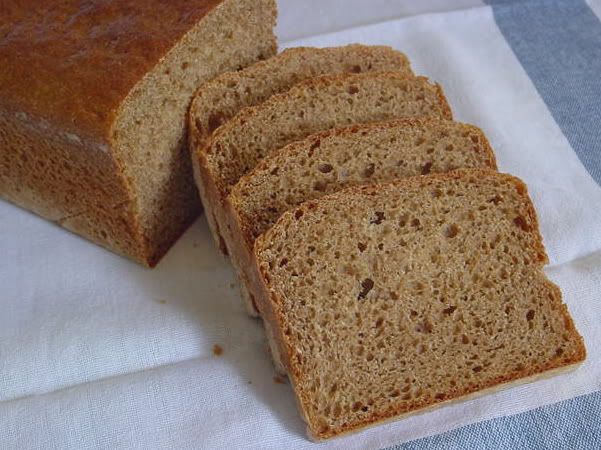
For the second edition of the newest feature of the blog where we look into healthy living by consuming nutritious foods, we take a bite into Spelt Bread. I've become a big fan of spelt in recent months. One of my favorite dishes has become lamb and spelt bread with butter. Too good. Too good with some great benefits. Take a look...
Spelt is an ancient grain that traces its heritage back long before many wheat hybrids. Many of its benefits come from this fact: it offers a broader spectrum of nutrients compared to many of its more inbred cousins in the Triticum (wheat) family. Spelt features a host of different nutrients. It is an excellent source of vitamin B2, a very good source of manganse, and a good source of niacin, thiamin, and copper. This particular combination of nutrients provided by spelt may make it a particularly helpful food for persons with migraine headache, atherosclerosis, or diabetes.
Concerned about atherosclerosis? You may want to increase your intake of spelt. This ancient grain is a good source of niacin, which has numerous benefits against cardiovascular risk factors. Niacin can help reduce total cholesterol and lipoprotein (a) levels. (Lipoprotein (a) or Lp(a) is a molecule composed of protein and fat that is found in blood plasma and is very similar to LDL cholesterol, but is even more dangerous as it has an additional molecule of adhesive protein called apolioprotein (a), which renders Lp(a) more capable of attaching to blood vessel walls.
Niacin may also help prevent free radicals from oxidizing LDL, which only becomes potentially harmful to blood vessel walls after oxidation. Lastly, niacin can help reduce platelet aggregation, the clumping together of platelets that can result in the formation of blood clots. Two ounces of spelt flour will supply you with 24.0% of the daily value for niacin.
The fiber in spelt can also help to reduce total and LDL cholesterol levels. The presence of fiber also contributes to the cholesterol-lowering potential of spelt. Fiber binds with the bile acids that are used to make cholesterol. Fiber isn't absorbed, so when it exits the body in the feces, it takes the bile acids with it, making less available for cholesterol production.

No comments:
Post a Comment